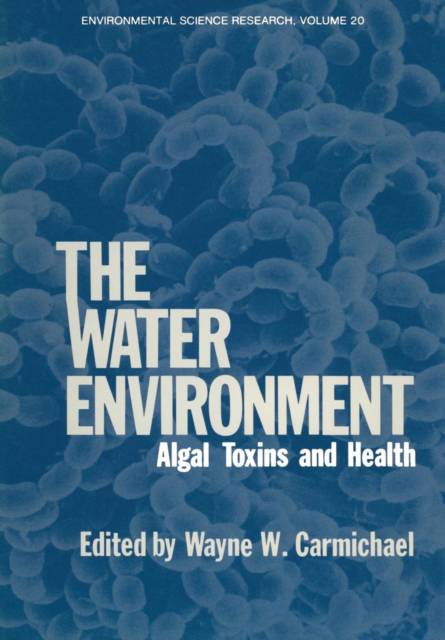
- Afhalen na 1 uur in een winkel met voorraad
- Gratis thuislevering in België vanaf € 30
- Ruim aanbod met 7 miljoen producten
- Afhalen na 1 uur in een winkel met voorraad
- Gratis thuislevering in België vanaf € 30
- Ruim aanbod met 7 miljoen producten
Zoeken
The Water Environment
Algal Toxins and Health
€ 106,95
+ 213 punten
Omschrijving
The conference on The Water Environment: Algal Toxins and Health was held at Wright State University in Dayton, Ohio, on June 29, 30, July 1, 2, 1980. Its principal objectives were to bring together, for the first time, researchers, public officials and interested parties in order to present and discuss what is known about algal toxins. The conference concentrated almost exclusively on toxins and toxic blooms of blue-green algae (Cyanobacteria). Since the most common Cyanobacteria bloom forming species are also the ones most likely to produce toxins, they are a problem in the maintenance of safe animal and human water supplies. While poison- ings by Cyanobacteria involve mainly domestic and wild animals, they may also be responsible for cases of human gastroenteritis and con- tact poisoning. Even though human poisonings by Cyanobacteria have historically not been a widespread problem, continued deterioration of our recreational and municipal water supplies suggests that blooms of non-toxic and toxic Cyanobacteria blooms will increase. In addi- tion to studies on their role as disease agents, there is basic research being done on their pharmacological properties to determine their mode of action and usefulness as tools in the study of basic neuromuscular mechanisms. These papers were centrally typed for reproduction as camera- ready copy. Each paper was reviewed and edited by at least two per- sons of the editorial committee. This volume is organized into five major sections: 1.
Specificaties
Betrokkenen
- Uitgeverij:
Inhoud
- Aantal bladzijden:
- 491
- Taal:
- Engels
- Reeks:
Eigenschappen
- Productcode (EAN):
- 9781461332695
- Verschijningsdatum:
- 4/11/2011
- Uitvoering:
- Paperback
- Formaat:
- Trade paperback (VS)
- Afmetingen:
- 170 mm x 244 mm
- Gewicht:
- 798 g

Alleen bij Standaard Boekhandel
+ 213 punten op je klantenkaart van Standaard Boekhandel
Beoordelingen
We publiceren alleen reviews die voldoen aan de voorwaarden voor reviews. Bekijk onze voorwaarden voor reviews.










